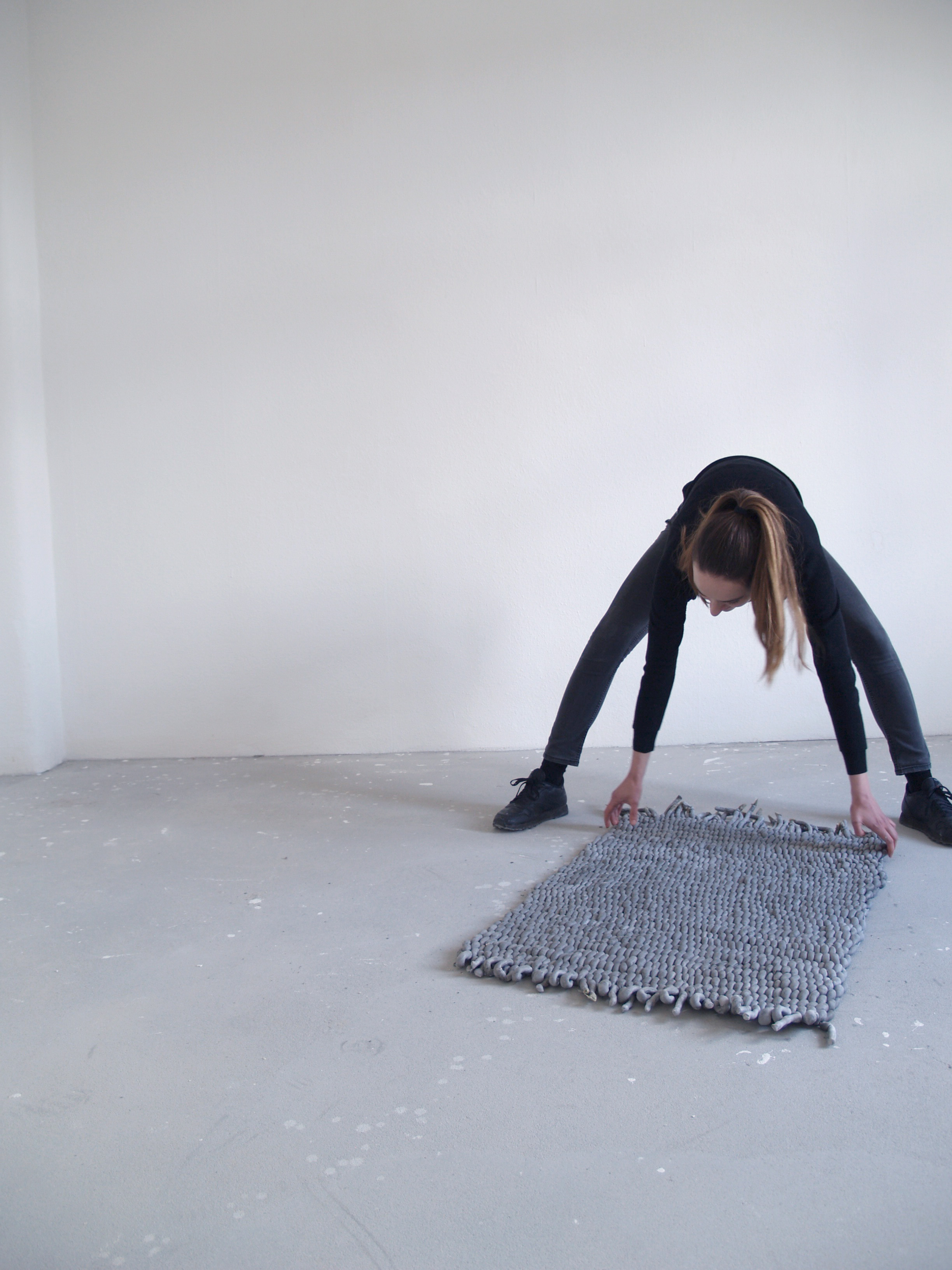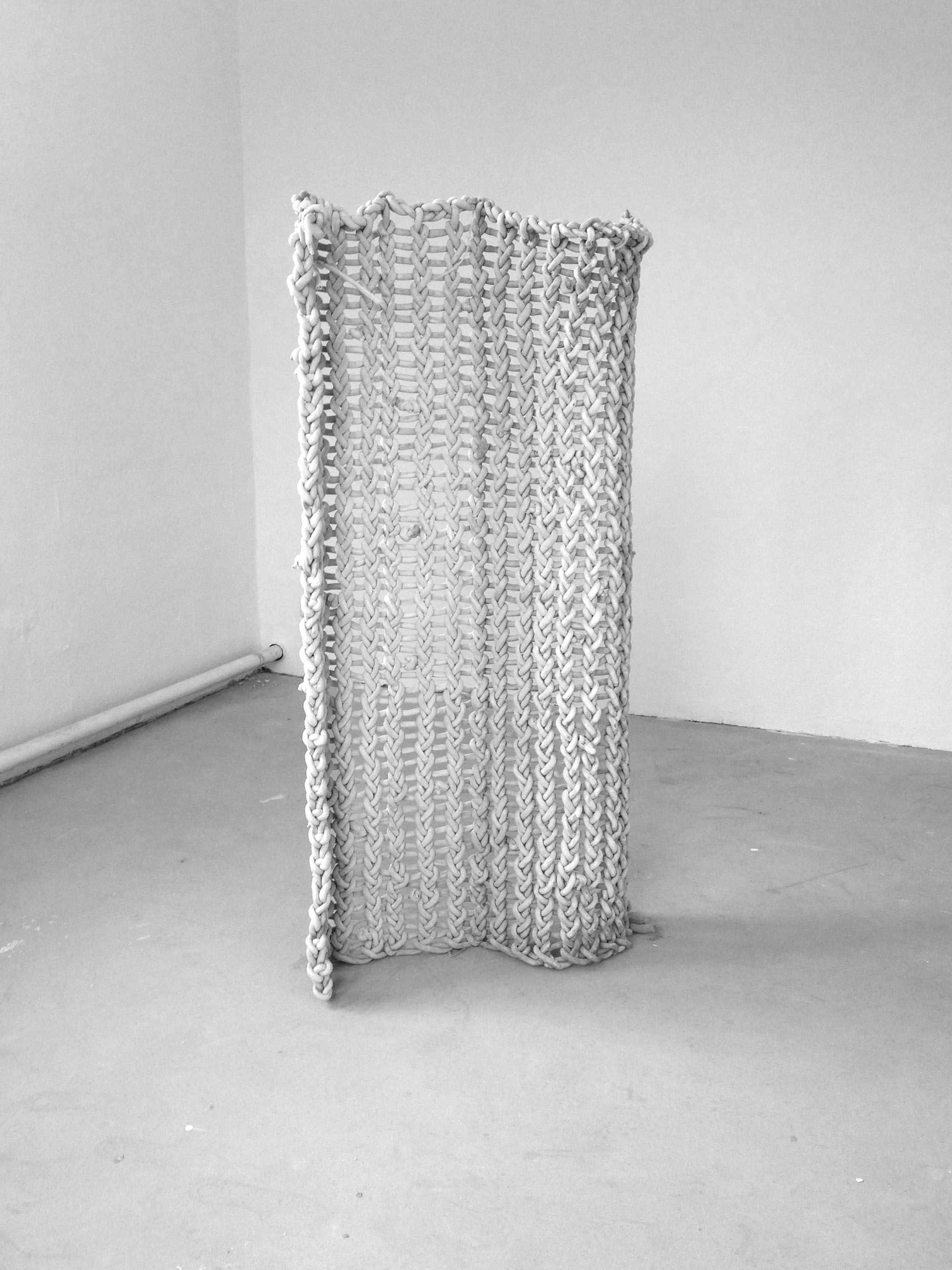Textile Concrete Structures
> Material Textile Design Study
Combines the characteristic qualities of
concrete with textile materials and different textile
techniques to create large-scale textiles with
solid, load-bearing, free-standing or flexible
properties.
Material: concrete, textile Technique: knitting, weaving, knotting Shaping: gravity hanging
Model: Mira Hardt
Detail: KH Berlin Weißensee, 2016
Material: concrete, textile Technique: knitting, weaving, knotting Shaping: gravity hanging
Model: Mira Hardt
Detail: KH Berlin Weißensee, 2016
Details:
BetonTextil is a research study with the goal of merging concrete and textile into a strong material compound, combining the characteristic qualities of both. Textile techniques are essential for this project and have a big impact on the performance of the resulting hybrids. Different materials and construction techniques, like knitting, weaving, and knotting were explored and analyzed. The tested samples indicated both an ideal combination of materials and revealed a difference in stability and thus possibilities of the respective constructions.






Development & Process
The research and development phase was an essential part of the project. The resulting objects were primarily used to test the research on a large scale, but also to communicate the development in a tangible way.
The manufacturing processes were very different for each object. Of course due to the construction techniques, but more importantly the ways in which the textiles were shaped differed greatly.
The long knitted fabric was hung on one side and moulded by gravity. The entire knitted fabric stretched under the weight of the water contained before evaporation, so that the knitted fabric folded at the bottom.
The free-standing knitted fabric was first knitted straight to form a large rectangle. It was then fixed in places to a metal grid in such a way that it deformed like a bow when the grid was turned round. This deformation was necessary to create a standing surface. In addition, the type of moulding was inspired by the catenary.
The woven structure, which is intended to emphasise a load-bearing property as a kind of stool, is produced with the most stable construction, by weaving from several yarn threads. The shape of the object was chosen in order to turn the tensile forces into compressive forces by means of the catenary, which is created by hanging the surface to form an arch.
The third constuction technique, knotting, resulted in the fourth object: a movable, carpet-like textile. The predetermined breaking points created in the knotting process caused the initially rigid surface to crack and thus become movable. Despite the breaking of the concrete, the textile is held together by the fabric sleeves of the hybrid yarns.